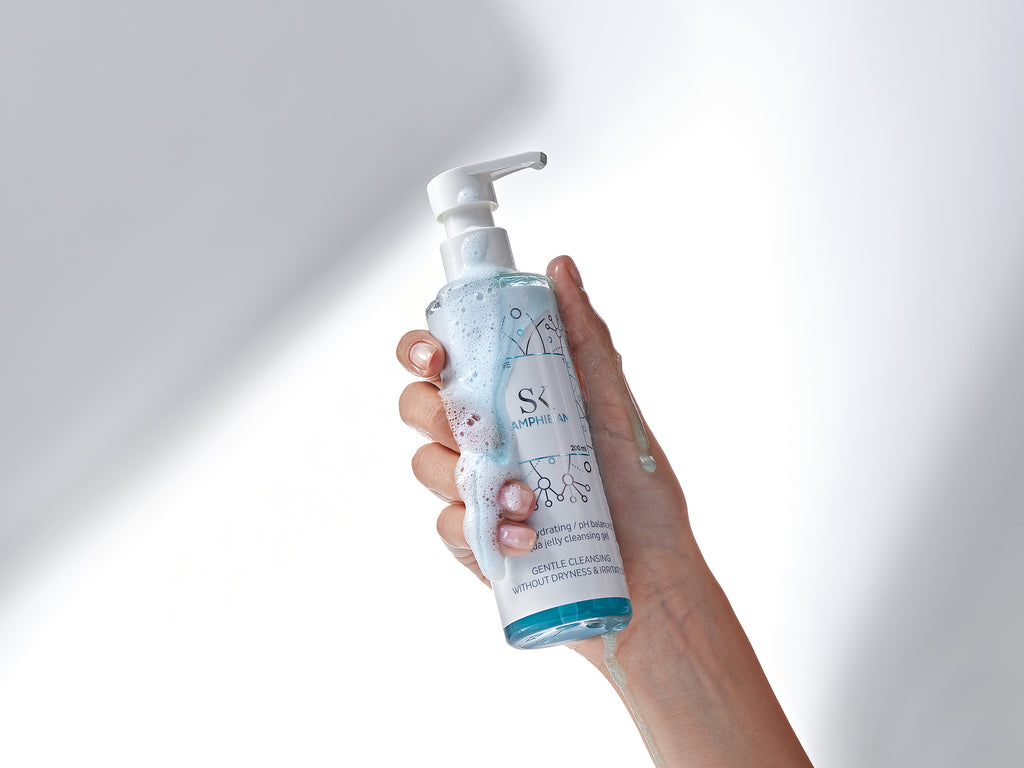Skin type varies from person to person, but regardless of whether you have oily, combination or dry skin, your skin can also be dehydrated. This is a changing condition, and each of us will probably experience skin dehydration at some point. Therefore, it is important to know how and when it occurs, which is why this text is dedicated to the causes of dehydration, how to spot the signs of dehydrated skin and supply it with an adequate amount of moisture, and how to prevent dehydration again.
How does skin dehydration occur?
Dehydration occurs due to disruption of the balance of the hydrolipidic barrier of the skin, i.e. due to transepidermal moisture loss (TEWL) . The role of the epidermis, in addition to protecting the body from external harmful factors, is also to prevent the loss of water and electrolytes from the body. Small amounts of water are still lost through evaporation from the skin's surface, which is called transepidermal moisture loss. TEWL is an indicator of the barrier function of the skin, and its value should be as low as possible, because higher TEWL values indicate an increased loss of water from the skin and a damaged hydrolipidic barrier.
TEWL occurs as a result of drying of the skin, either by improper cleaning of the skin and the use of products with drying ingredients, or by too frequent exfoliation of the skin , which leads to the evaporation of moisture from the deeper layers, which ultimately leads to dehydrated skin.
How does dehydration manifest itself and what are the differences between dehydrated and dry skin?
Dehydrated skin is recognizable by its surface tightness and flaking, along with the appearance of dehydration lines and wrinkles. It is a condition that occurs on all skin types, even oily skin. Due to the damaged hydrolipidic barrier, the skin is not able to maintain an adequate level of moisture and, in an attempt to compensate for moisture, the dehydrated skin becomes more and more fat, which leads to an attempt to suppress fat and further drying and even greater dehydration of the skin.
On the other hand, dry skin is a type of skin that does not independently produce an adequate amount of ceramides, cholesterol and fatty acids, it is deeply dried out, tightens and peels. It is often accompanied by itching and redness. Dry skin needs moisturizers and occlusive emollients.
How to help dehydrated skin?
Although the skin can be dry and dehydrated at the same time, dehydration occurs more often in oily and combination skin using inadequate products. Mixed to oily skin, which is also dehydrated, needs to be supplied with moisture and try to prevent transepidermal moisture loss in order to restore the balance of the hydrolipidic barrier. It is necessary to avoid heavy and occlusive products and introduce non-comedogenic emollients and moisturizers into the routine.
What are moisturizers and how do they supply the skin with moisture?
Moisturizers or humectants, such as glycerol, panthenol, ectoin, hyaluronic acid and urea, are ingredients that restore lost moisture to the skin by attracting and binding water to skin cells, maintaining optimal skin moisture and slowing the process of moisture evaporation, resulting in a balanced hydrolipidic barrier.

Suggested routine for dehydrated skin:
After gentle cleansing of the skin using Amphibian gel , which will cleanse the skin of impurities, but reduce the drying of the skin to a minimum due to the pH similar to the skin (5.5), gentle surfactants and moisturizers, it is necessary to compensate for the lost moisture by applying the Nectar moisturizing essence , which is also adorned with a balanced pH (5,5) and humidifiers. Nectar is perfectly complemented with Hydra B serum emulsion , which deeply moisturizes the skin and strengthens its hydrolipidic barrier. Its specialty is hyaluronic acid, which binds perfectly to the moisture from Nectar. With extremely dehydrated skin, after Hydra B, it is possible to apply Naro oil booster , which will prevent moisture from escaping from the skin. In addition to Hydra B, the ideal ally for dehydrated skin is the CICA-CERA cream , which, in addition to the CICA complex, also contains ceramides and moisturizers that prevent transepidermal moisture loss and intensively moisturizes the skin.
Literature:
- Draelos, Zoe. (2009). Proper Skin Hydration and Barrier Function. Nutritional Cosmetics. 355-363.
- Kasolang, Salmiah et al. (2020). Common skin disorders: A review. Journal of tribologists. 59-82.

